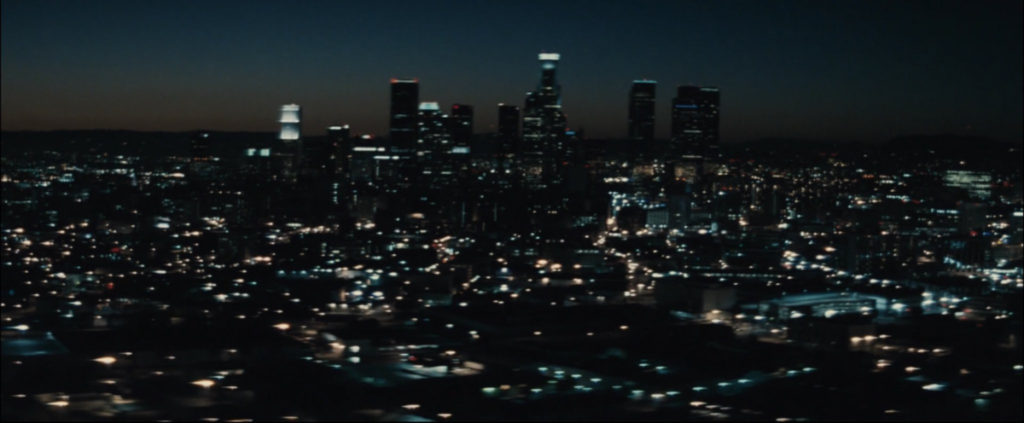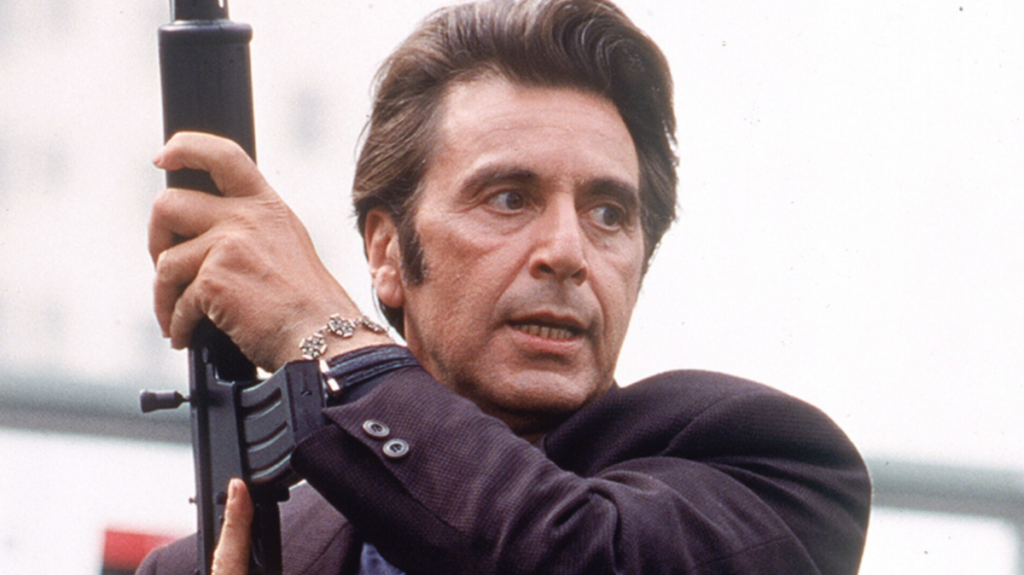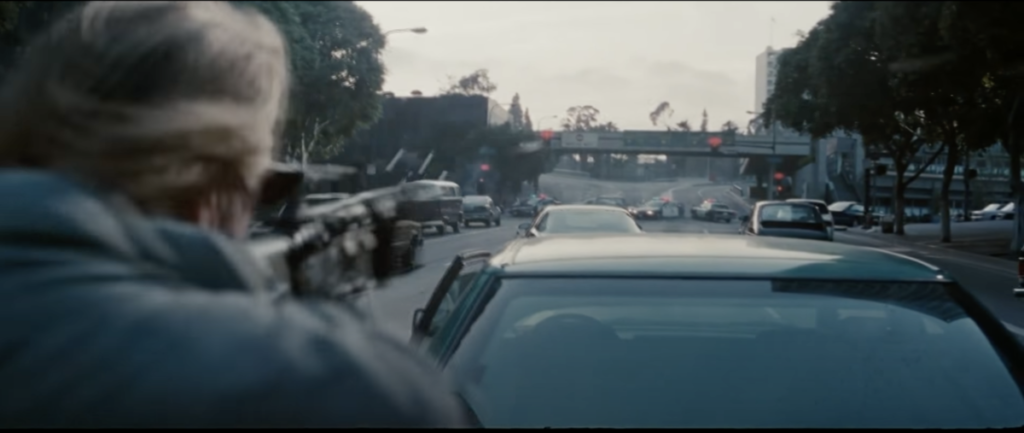The movie “Heat” is renowned for its action sequences and masterful cinematography. One of its most iconic action sequence is the bank heist scene. In this scene, Director Michael Mann’s masterful use of shot angles effectively elevates the tension and intensity of the sequence.
Mann opens the heist scene with a series of aerial shots, offering viewers a strategic overview of the cityscape. These shots highlight the crew’s planning, showcasing their strategic positions and the intricate web of their operation. The expansive angles set the stage for the complexity and precision required for the impending bank robbery, creating suspense for the viewers.

As the crew swings into action, Mann employs close-up shots to focus on their facial expressions. These intimate angles capture the tension, concentration, and human emotions of the characters. By zooming in on their faces, Mann establishes a connection between the audience and the bank robbers, letting them almost live vicariously through the robbers.

Wide shots are also strategically utilized to establish spatial awareness, both inside and outside the bank. Mann’s cinematography provides a comprehensive view of the environment, allowing the audience to grasp the geographical layout of the heist. These wide angles contribute to the scene’s realism, relating back to the concept of “total myth of cinema” mentioned in class, effectively immersing viewers in the unfolding action with a clear understanding of the surroundings.
Mann cleverly employs point-of-view shots as well as shot reverse shot techniques, allowing the audience to experience the heist from the characters’ perspectives. Whether it’s a crew member entering the bank or having a shootout with the law, these shots immerse the viewers in the immediacy of the unfolding events, intensifying their connection to the action.

To infuse a sense of urgency and unpredictability, Mann incorporates handheld cinematography during the heist. Mann incorporates shaky movements of the camera to enhance the chaos and tension of the moment, adding a dynamic quality to the scene. Handheld shots contribute to the realism and unfiltered intensity that defines the heist.
Key moments of the heist are accentuated by low-angle shots, emphasizing the power and dominance of the robbers. When the crew takes control, these low angles empower them, visually conveying the shifting power dynamics within the scene.

In the heart-pounding bank heist scene of “Heat,” Michael Mann’s clever use of shot angles emerges as a defining feature of its cinematic brilliance. Aerial views, close-ups, wide shots, point-of-view perspectives, handheld cinematography, and low angles collectively form a visual symphony that immerses audiences in the high-stakes world of the heist. Mann’s strategic consideration of shot angles enhances the narrative, intensifying the viewer’s experience and cementing the scene as a cinematic masterpiece.